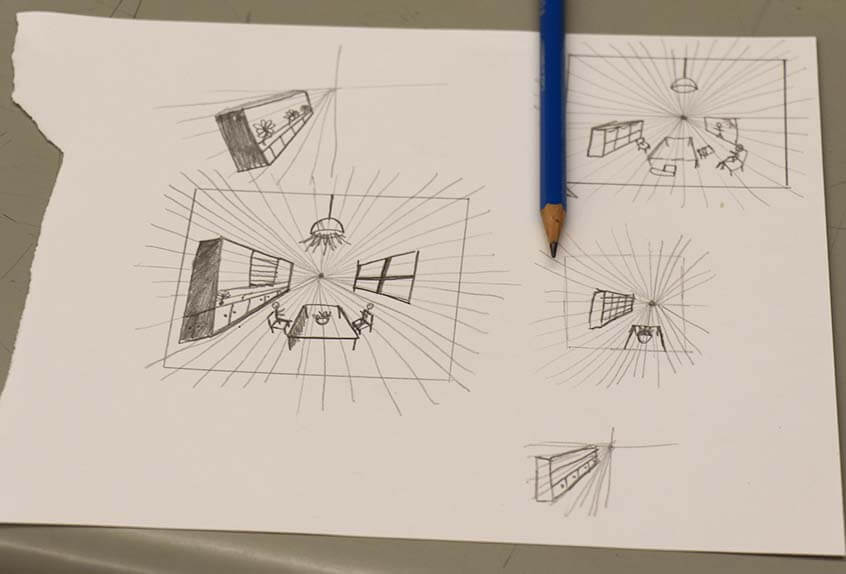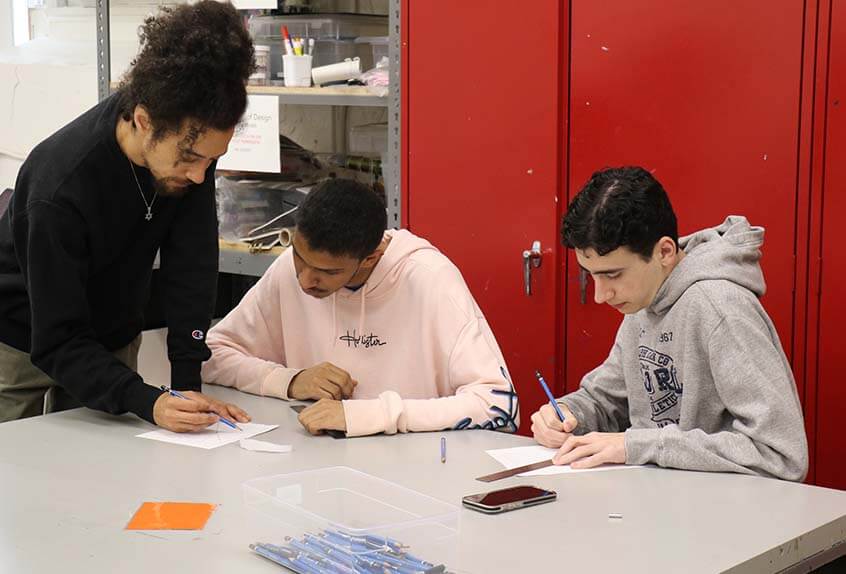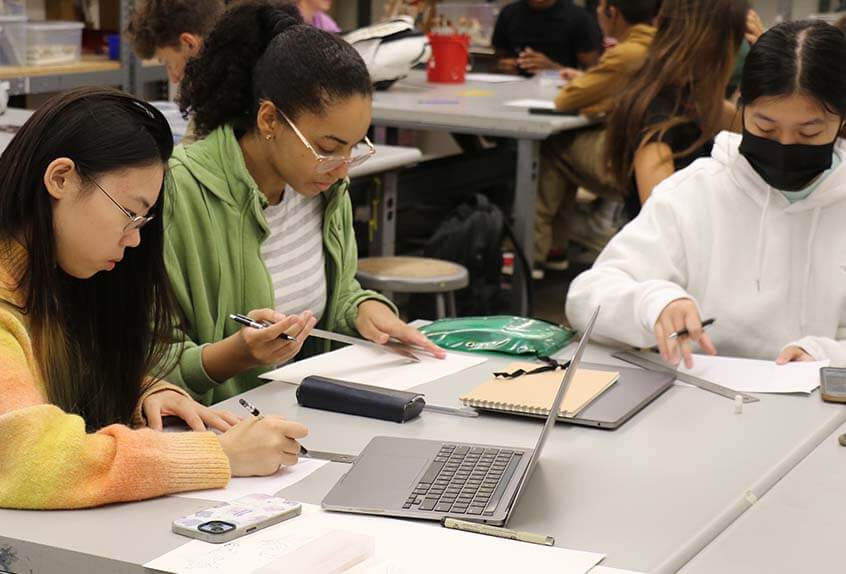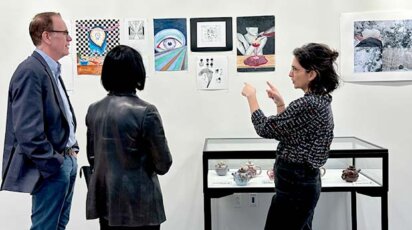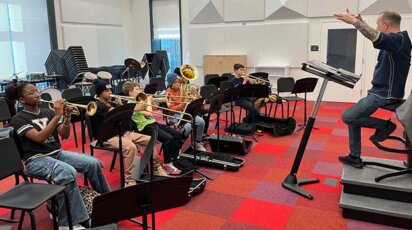News
New Course Alert: Diving into the World of Graphic Novels
In Art Studio 3, Dan Herwitt is teaching a new course on designing graphic novels for students in Grades 10, 11, and 12.
Herwitt’s course description connected with many Poly students. He wrote, “Graphic novels speak to our subconscious, in some cases without words. In some cases, they combine drawing and writing in the same space. In a shifting world, graphic novels connect us through stories of the human experience. There is an active renaissance of authors and artists dedicated to genre bending, speaking about the multitude of issues teenagers and young adults face today.”
“I always want to support faculty’s interests,” said Chair of Visual Arts Laura Coppola ’95, P’29, P’35, “so when Dan proposed the Graphic Novels class, I knew he’d be sharing an artistic passion with his students. The course’s curriculum builds nicely on the work he does with his Foundations in Drawing students by giving them a narrative focus for their work. I also love the idea that students are reading graphic novels in some of their English classes, and now they have the chance to come to these novels from a new angle, learn about their historical contexts, and create their own stories through text and image.”
Perspective, Horizons, and Vanishing Points
On a recent morning, the class began with a drawing exercise using one-point perspective. “You start with the horizon line,” Herwitt explained. Students were beginning the exercise by drawing a line on a 6” X 5” panel of scratch paper before moving on to Bristol paper. Then you create a horizon line, plot a vanishing point, and draw 360-degree rays outward from the vanishing point, Herwitt explained. The lines create the illusion of distance.
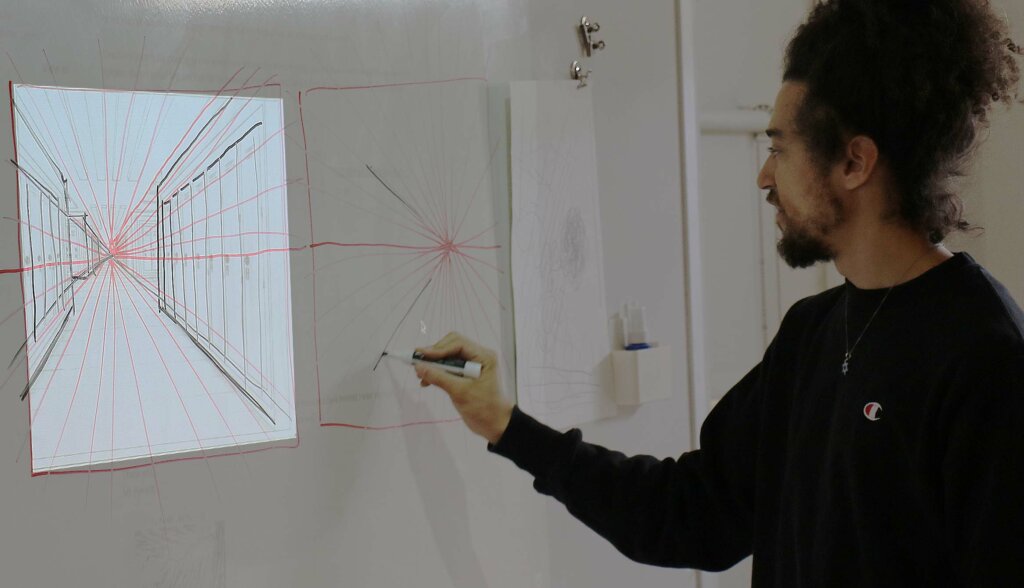
He explained that in two-point perspective, there are two vanishing points. And on to three-point perspective. “It can get very complex,” he told the students.
As students drew their horizon line and then the vanishing point, Herwitt walked around the classroom to see how they were doing. He advised them to “keep it simple” as they planned what they wanted to portray in the panel.
Creating the Illusion of 3-D
Back at the board, Herwitt showed the students how they can create the illusion of 3-D letters by drawing radiating lines out from the letters of a word such as LOVE.
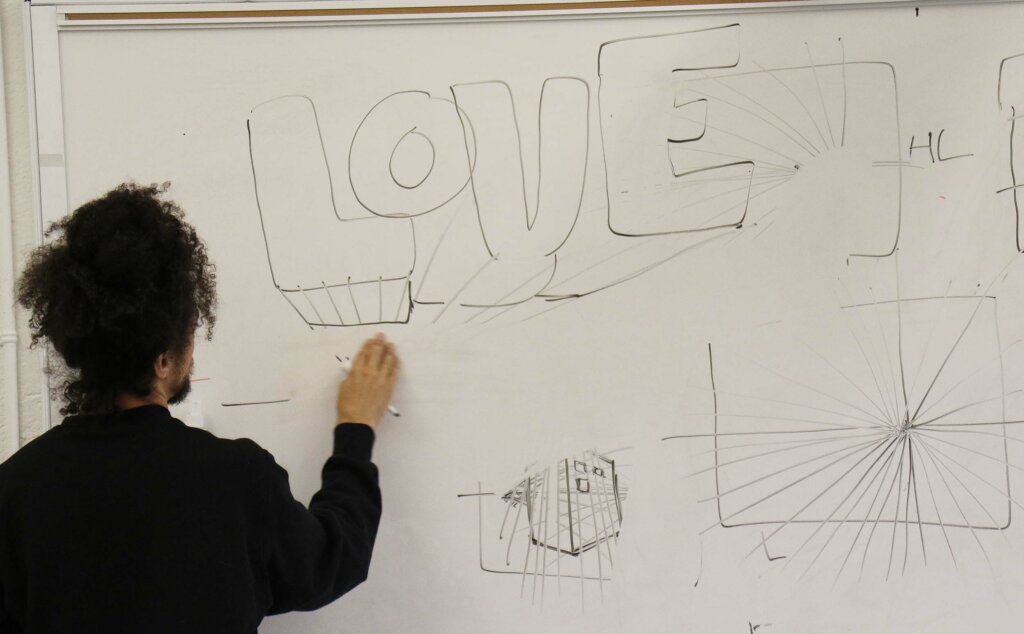
Drawing on Inspiration
Herwitt showed the students examples from comic book artist Karl Stevens’ own graphic novels. He explained that Stevens “works from photographs and treats a comic like a movie.” Herwitt said that artists “collect references,” which can be anything such as a plant, animal, glasses, tree, or table. Having these helps the artist to pay attention to detail so that their drawings are “specific” and not all trees are drawn the same.
Art Students React
This is the first drawing class that Isabella Carire ’26 has taken at Poly. “I was motivated to take the new Graphic Novels class because I love drawing and my father reads a lot of comic books,” said Carire. “I like how much more creative freedom you have with graphic novels with different perspectives and certain concepts like emotions and symbolism are shown in an easier manner.” She added, “I have enjoyed the inking of the drawings. The inking is difficult with its permanence, but in the end, it’s worth it with how much better the drawing looks.”
Madeline Gross ’26 decided to take the Graphic Novels class “because I grew up reading graphic novels and I thought that this class would be a great way to expand my art.” She added, “Last year, I took Mr. Herwitt’s Intro to Drawing class and I found it to be extremely helpful and made me a much better artist. I’ve found that drawing in perspective is a lot more difficult than I thought it would be, but that it is also a lot of fun.”
